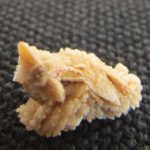
Urinary stone formation in adults increases the odds of asthma by 26%, according to a study.
Urinary stone disease (USD) in adults is associated with an increased likelihood of asthma, according to a new study.
The association is more pronounced among recurrent stone formers, individuals aged 20 to 49 years, persons with diabetes, and those who are obese.
Justin A. Lee, MD, of Albert Einstein College of Medicine in Bronx, New York, and colleagues analyzed data from 20,906 individuals aged 20 years or older who participated in the National Health and Nutrition Examination Survey (NHANES) 2007–2014, a US population-based nationally representative survey. Of these patients, 9.2% reported a history of asthma. The prevalence of asthma was significantly higher among stone-formers than non-stone formers (17.2% vs 14.4%), Dr Lee and his team reported online ahead of print in European Urology Focus.
In a fully adjusted multivariable model, stone formers had significant 26% increased odds of asthma compared with non-stone formers. Recurrent stone formers (more than 2 stones) had significant 36% increased odds. Individuals with single stones had non-significant 20% increased odds.
“These findings are exciting considering that recurrent stone formers may be a distinct group with underlying pathophysiology, whereas single stone former events may plausibly be situational rather than physiologic,” Dr Lee’s group wrote.
They explained that stone composition may differ between single stone and recurrent stone formers, “such that the higher odds for asthma in recurrent stone formers may suggest an underlying shared pathophysiology, which deserves further study.”
Among individuals aged 20 to 49 years, stone formers had significant 37% increased odds of asthma compared with non-stone formers. Among those older than 50 years, the investigators found non-significant 15% increased odds of asthma among stone formers.
In addition, the study found stronger associations between USD and asthma among diabetics and obese individuals (body mass index 30 kg/m2 or higher). Among individuals with diabetes, stone formers had significant 2-fold increased odds of asthma compared with non-stone formers in a fully adjusted model; among non-diabetics, stone formers had non-significant 10% increased odds. Among obese individuals, stone formers had 41% increased odds of asthma compared with non-stone formers; among non-obese individuals, stone formers had non-significant 12% increased odds.
The authors noted that both USD and asthma have been increasing in prevalence. Metabolic syndrome (MetS) could be a factor. They pointed to a study of NHANES data (1988–1994) published in the American Journal of Kidney Diseases (2008;51:741-747) showing the prevalence of self-reported history of kidney stones among individuals aged 20 or older increased with the number of MetS traits, from 3% with none of the traits to 7.5% with 3 traits and 9.8% with 5 traits.
Insulin resistance is a characteristic of MetS, Dr Lee’s team pointed out. They cited previous studies of NHANES data linking insulin resistance with increased odds of asthma and demonstrated that worsening insulin resistance is associated with increased odds of kidney stones.
Dr Lee and his colleagues said their analysis demonstrated a significantly stronger association between urinary stones and asthma among patients with diabetes and those who were obese, “suggesting that insulin resistance may be one potential avenue of further research that could help explain the observed associations between USD and asthma.”
References
Lee JA, Abramowitz MK, Kipperman N, et al. Exploring the association of asthma with urinary stone disease: Results from the National Health and Nutrition Examination Survey 2007–2014. Eur Urol Focus. 2018; published online ahead of print.
West B, Luke A, Durazo-Avizu RA, et al. Metabolic syndrome and self-reported history of kidney stones: the National Health and Nutrition Examination Survey (NHANES III) 1988 – 1994. Am J Kidney Dis. 2008;51:741-747.





